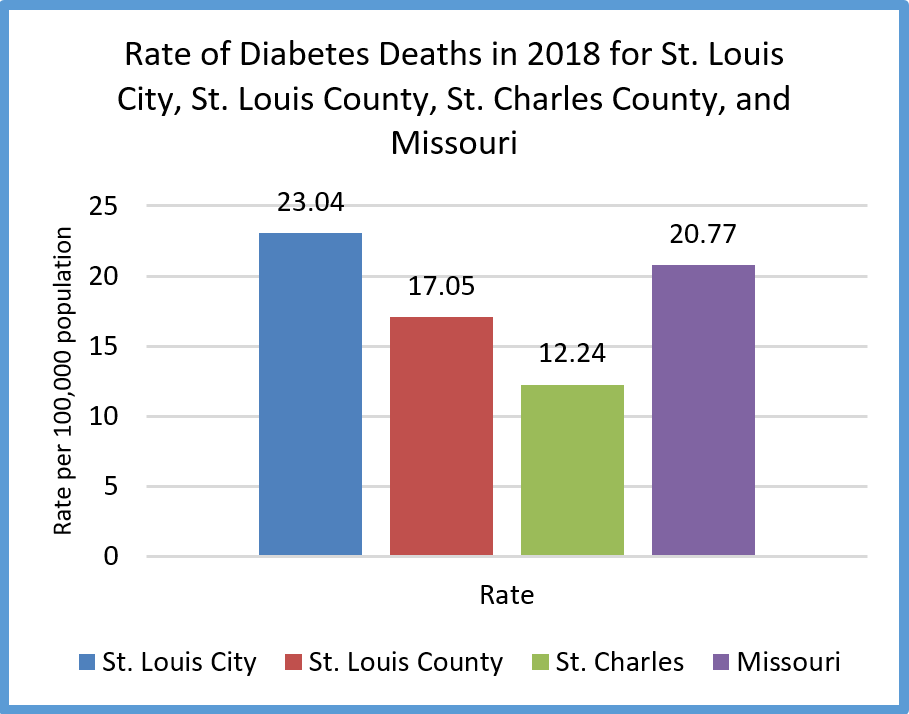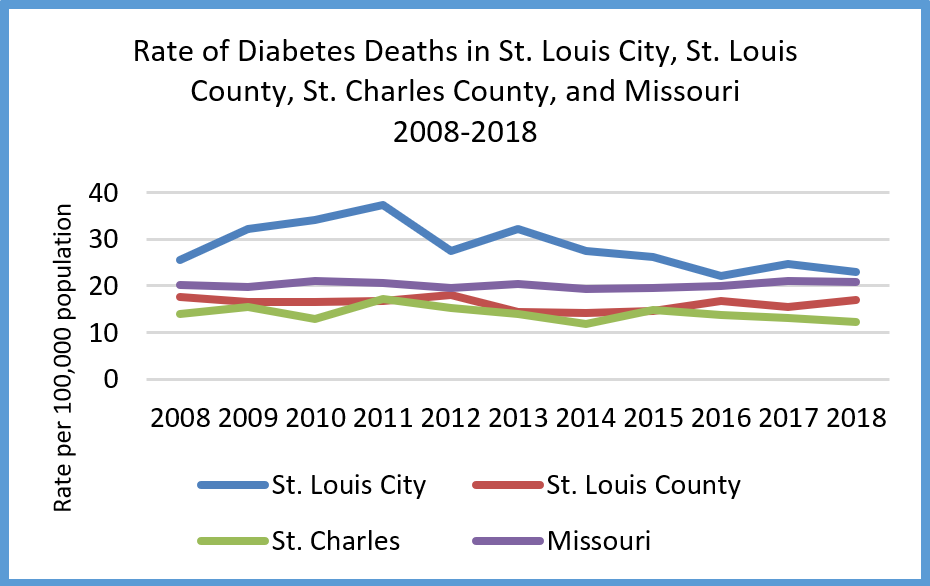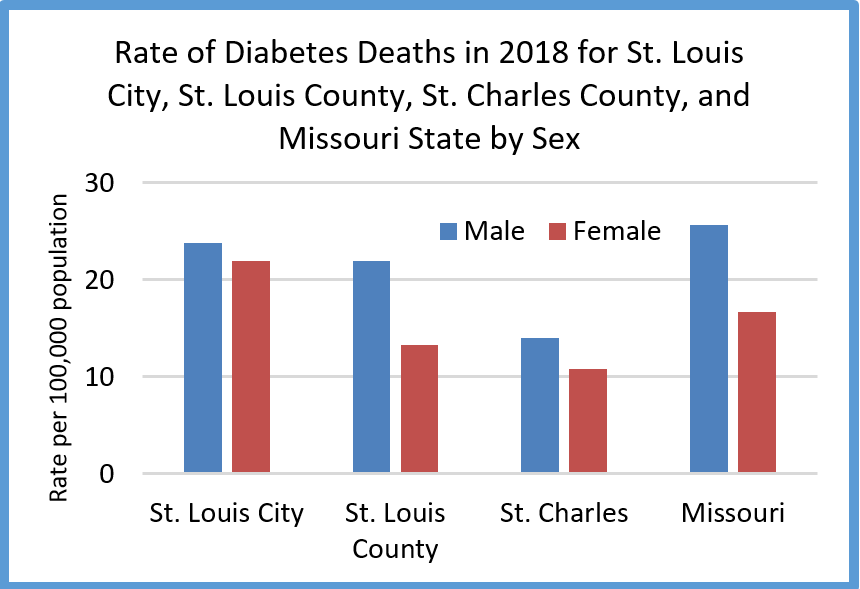Diabetes Data Brief (2021)
Diabetes is a disease characterized by high blood glucose levels and is a leading cause of health problems in the United States.
This content is also available in the following format:
Diabetes Data Brief
Diabetes is a disease characterized by high blood glucose levels and is a leading cause of health problems in the United States. In 2020, 13.0% percent (34.1 million) of the U.S. adult population had diabetes, and in 2017, diabetes was the seventh leading cause of U.S. deaths. (1)
Risk factors for Type I diabetes are not as well-known as prediabetes and Type II diabetes but are thought to include age and family history. Many Americans have prediabetes and Type II diabetes risk factors, including overweight/obesity, physical inactivity, and an unhealthy diet. Other factors such as age, race-ethnicity, and family history also put people at a higher risk for Type II diabetes and prediabetes. Risk factors for gestational diabetes include obesity, family history, race, age, a history of polycystic ovary syndrome and giving birth to a baby over nine (9) pounds. 26.8% of U.S. adults over age 65 have some form of diabetes. (1)
The public health impact and economic burden of diabetes is enormous. In 2017, it was estimated that the total cost of diagnosed diabetes was $327 billion, which includes $237 billion in direct health care services and $90 billion in an associated loss in productivity, absenteeism, and inability to work. (1)


City of St. Louis Surveillance of Diabetes
In 2018, St. Louis City had a diabetes death rate of 23.04 per 100,000 population, which was higher than the rate of St. Louis County with 17.05 per 100,000, and St. Charles County with 12.24 per 100,000. The state of Missouri had a diabetes death rate of 20.77 per 100,000. (2) From 2009 to 2018, the U.S. and Missouri saw a slight increase in diabetes death rates. (1) However, the diabetes death rate for the city has dropped by 28% since 2009, compared to St. Louis County (2%) and St. Charles (11%). Nonetheless, the burden of the disease remains high in the City of St. Louis. As seen throughout the state and nationally, males suffer from diabetes at a greater rate than females. In 2018, males in St. Louis City had a diabetes death rate of 23.8 per 100,000 compared to females with 21.9 per 100,000.2 According to the Centers for Disease Control and Prevention ( CDC), diabetes is the sixth leading cause of death for men, and it is responsible for three in every 100 male deaths. (1)


Racial disparities exist in diabetes deaths, resulting in higher death rates for Blacks/African Americans than for Whites. The diabetes death rate in 2018 amongst Black residents in the City of St. Louis was 26.8 per 100,000, compared to White residents with 21.0 per 100,000. (2) The health disparity among racial and ethnic groups is also observed at both state and national levels. The burden of diabetes in the City of St. Louis may be ascribed to a high number of residents with unhealthy lifestyle choices, such as physical inactivity and unhealthy diets, which constitute major risks for diabetes. Based on 2020 data, 34% of adults in St. Louis City are obese, and 26% do not engage in any leisure-time physical activities. Also, the diet quality/food environment index for St. Louis residents is 6.0/10. (3) These health indicators are why St. Louis City ranked poorly compared to other counties and the state. Another contributory factor is the uninsured rate, which is also high in St. Louis City at 15% of adult residents. Being uninsured increases the risk of complications and death from diabetes as access to monitoring equipment and quality care decreases.
What Are Health Departments Doing to Reduce and Control Diabetes?
- Promoting the adoption of food service guidelines and nutrition standards, which include developing policies aimed at increasing nutritional reporting.
- Promoting the adoption of physical education and physical activity in schools, early child care centers, and work sites.
- Promoting reporting of blood glucose and self-monitoring of blood glucose.
- Promoting awareness of prediabetes among people at high risk for type 2 diabetes.
- Increasing access to healthy foods and beverages and supportive nutrition environments.
- Implementing quality improvement processes in health systems.
- Educating the community on nutrition and eating healthy foods, being physically active, and other preventive measure for reducing risk factors for diabetes.
- Coordinating with local organizations to offer direct health services.
- Connecting people to resources for medical assistance and for help with reducing risk factors for diabetes.
Sources
- Centers for Disease Control and Prevention (www.cdc.gov)
- Missouri Information for Community Assessment (https://healthapps.dhss.mo.gov/MoPhims/MICAHome)
- County Health Rankings and Roadmaps (www.countyhealthrankings.org)